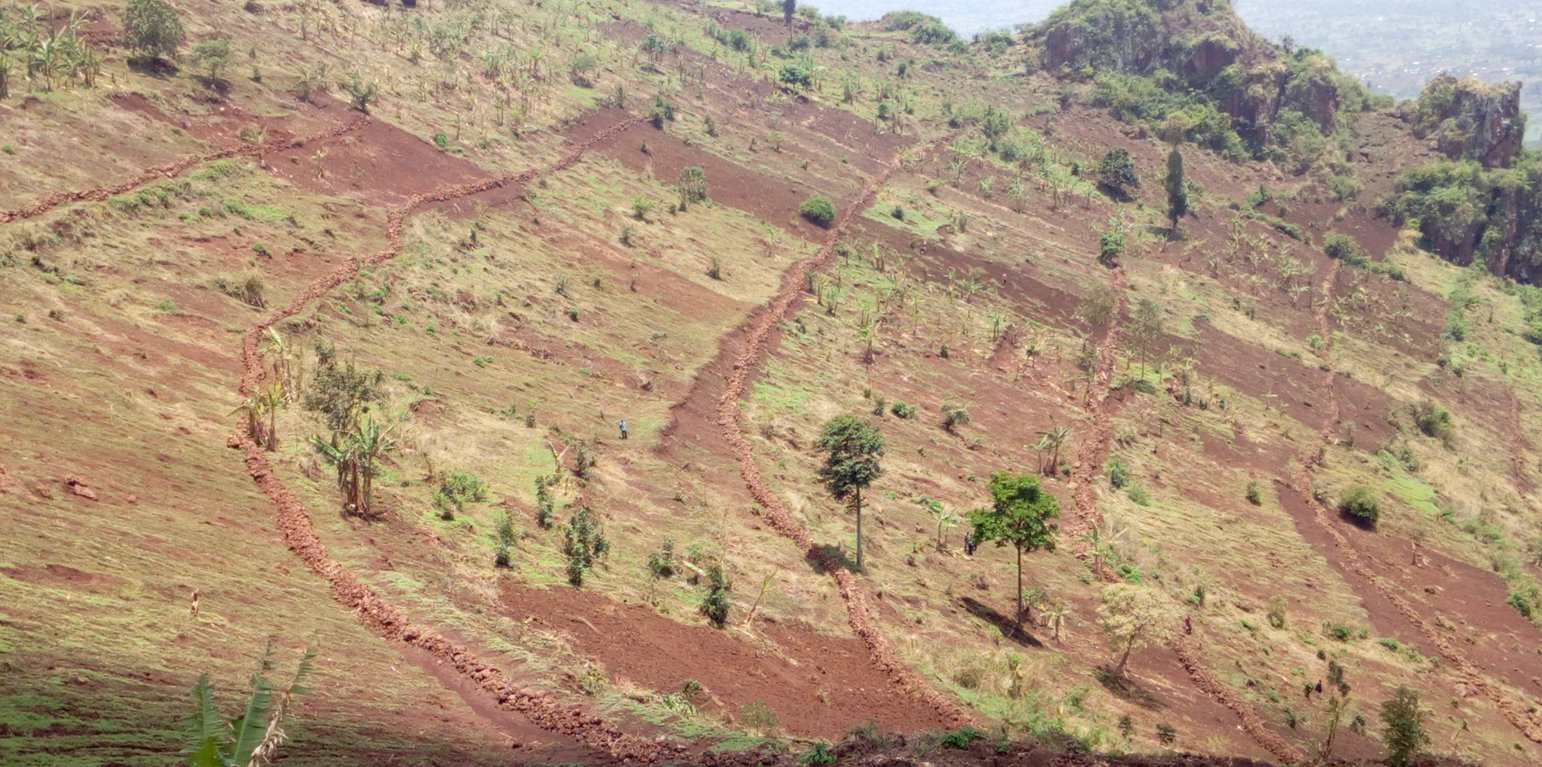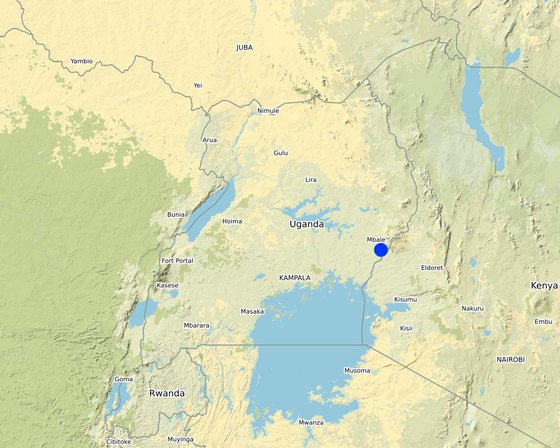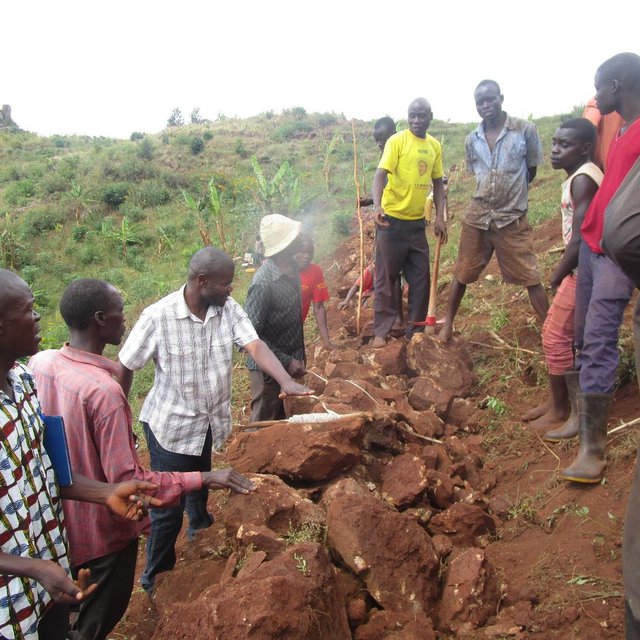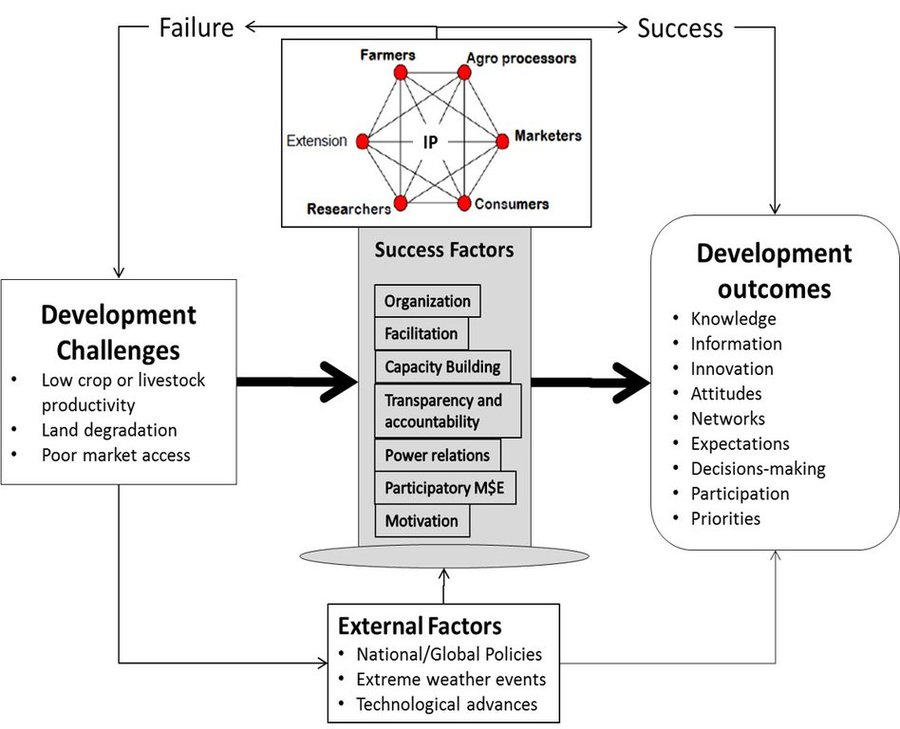



Efficient use of natural resources is a critical pathway to achieving green growth. Mountain ecosystems are an example of natural resources that need to be sustainably managed to continue providing economic, social and environmental benefits to the large number of dependent communities. The challenge is that these ecosystems are fragile and highly susceptible to natural disasters and their management requires multi-sectoral, transboundary, interdisciplinary and landscape level interventions. Although several technologies to address land degradation exist, adoption remains low. This has been attributed mainly to a dysfunctional extension system and weak implementation of land management policies/regulations. Working at landscape-scale and ensuring inter-sectoral coordination and cooperation is crucial for effective land management responses.
An Innovation Platform (IP) approach is a mechanism to enhance communication and innovation capacity among mutually dependent actors, by improving interactions, coordination, and coherence among all actors to facilitate learning and contribute to production and use of knowledge. The IP approach is a coalition, collaboration, partnership and alliance of agricultural research and development (ARD) actors. That is, public and private scientists, extension workers, representatives of farmers, farmers’ associations, private firms and non-governmental organizations and government policy makers.
Documentation of this approached is based on experience from a study conducted in the eastern highlands of Uganda. The aim of this study was to improve the understanding of how IPs can enhance adoption of soil and water conservation technologies in the fragile highland ecosystems of eastern Uganda. Control of soil erosion was identified as a challenge to be addressed by the IP. The process involved the key principles as follows:
1. Establishment of an effective leadership – An IP committee was established and trained on critical skills required in group dynamics
2. Facilitating formation of lower-level groups (IP clusters) – this is not a necessary step but was important to implement soil erosion control in Bugobero micro-catchments
3. Capacity building – mainly on soil erosion control using contour bunds stabilized with multipurpose trees (Calliandra and Grevillea). This was done through the Farmer Field School (FFS) approach. Farmers were able to collectively establish 4,000 meters of contour bunds and reduce run-off and erosion significantly
4. Participatory Monitoring and Evaluation
5. Development and implementation of an effective communication strategy among stakeholder; and
6. Facilitating the formulation of by-laws to foster implementation of soil erosion control. A by-law on maintenance of the established contour bunds was initiated and the process is still on-going.
From this experience, the IP intends to implement the FFS approach on other technologies such as fodder-bank establishment from Calliandra along contours bunds, manure management for production and collective marketing of bananas. These interrelated technologies are contributing towards improving the banana value chain, which plays a significant role in the food and income security of a majority of households in eastern Uganda. Data collection on information flow and knowledge sharing among stakeholders is on-going to provides empirical evidence about the potential of this approach. The benefits demonstrated by the IP are a motivation for stakeholders to participate in collective action. The cycle of benefits can lead to a self-sustaining community.
The need to establish an IP can originate from various actors including researchers, farmers, development agencies, NGOs, private companies, entrepreneurs and agricultural artisans, among others. Once a common challenge has been identified, the vision bearer can begin to mobilize other actors and share visions.
The advantages of this approach include:
1. direct and continuous interaction, communication and knowledge sharing among the IP actors
2. quick and continuous feedback from end users (farmers) at all stages of research for development and;
3. timely integration of new knowledge into the innovation process using experiential learning, monitoring and evaluation and the continous feedback
One limitation of this approach is that it requires continuous motivation of the various actors to maintain their interest the IP. Often times the benefits of Natural Ressources Management, NRM are long-lived while most actors look for shorter term benefits, making it difficult to maintain motivation. Conflict is a common occurrence in such multi-stakeholder platforms and only transparent and accountable leadership can overcome this. Examples of situation where conflict situations arise include technology selection, labour distribution, financial and gender biases.

Location: Khabungu Parish, Bugobero Sub county, Manafwa District, Mount Elgon Region, Uganda
Initiation date: 2016
Year of termination: n.a.
Type of Approach
| What stakeholders / implementing bodies were involved in the Approach? | Specify stakeholders | Describe roles of stakeholders |
| local land users/ local communities | Farmers | Implement land management practices on their farms |
| SLM specialists/ agricultural advisers | Agricultural Extension staff | Provide technical advise to farmers |
| researchers | National Agricultural Research Organization (NARO) | Study the technological, institutional and market approaches and processes for improving the functioning of the IP approach |
| NGO | Mbale Coalition Against Poverty (Mbale-CAP) | Provision of farm inputs such as tree seedlings of appropriate species |
| private sector | Input dealers, product dealers and banks | Provision of input such as seedlings to farmers and buying of produce such as bananas from farmers. Banks provide low-interest loans to farmers. |
| local government | Sub county local government | Support the process of preparation and enactment of by-laws of land management |
| international organization | International Research Centers (e.g. World Agroforetry Center) | Support research by providing extra expertise to national research centers and sometime laboratory facilities where needed |
Flow Chart of the process that the IP approach needs to go through to be effective

Decisions were taken by
Decisions were made based on
Soil erosion control using contour bunds, types of bunds, size and spacing between them
One of the objectives of the research was to understand how the IP processes can be improved to achieve more positive development outcomes (e.g. knowledge, attitude change). The other objective was to find out how effective short-rotation shrubs would perform in stabilizing contour bunds for soil erosion control in hillsides. The economic study aimed at assessing the marginal income from establishing contour bunds for soil erosion control.
Training provided on technological options for soil erosion control and leadership training to local leaders. All stakeholders contributed to the selection of appropriate technologies.
Farmers were part of the establishment of the contour bunds and also part of the M&E committee. Field days organized were used to show evidence of effectiveness of contour bunds at landscape level.
Farmers were able to establish 4000 meters of contour bunds in one of the micro catchments
Various stakeholders were able to meet in one place and collectively discuss a common challenge of soil erosion
Both the training and demonstration site on soil erosion enlightened land users about the various soil erosion control practices
The other stakeholders appreciated the importance of collective action at landscape level after soil erosion was reduced significantly
Extension staff, researcher and local government were able to realize the technologies generated by NARO such as Calliandra for livestock, which had not been known to local leaders before
Improvements in yield of bananas and maize was reported. This is part of food security improvement.
Traders participated in the IP with the hope of accessing a steady supply of bananas at stable prices if farmers agree to sign contracts with them. This commitment was not binding and did not show much success.
Before the project, soil erosion destroyed property and killed people in the catchment but this was avoided after the project implemented contour bunds. Heavy rains no longer affect the people negatively.
After realizing the benefits, farmers can be encouraged to work together to maintain the soil erosion control structures. Local leaders can ensure that the by laws are enforced to ensure compliance by land owners.